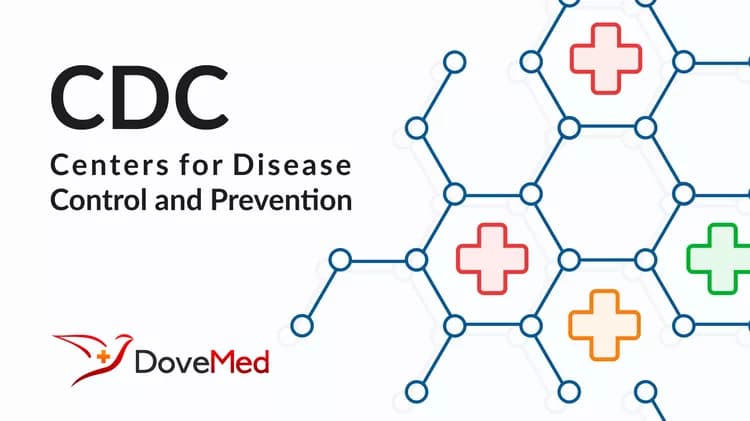
New CDC guidelines help schools prevent injuries among children and adolescents
New CDC guidelines help schools prevent injuries among children and adolescents
School Health Guidelines to Prevent Unintentional Injuries and Violence appear in the December 7 issue of CDC's Morbidity and Mortality Weekly Report, Recommendations and Reports series. The report identifies school policies and practices that are most likely to be effective in preventing unintentional injury (such as playground and sports injuries), violence, and suicide among young people.
"These new guidelines are an important public health resource for schools and communities," said Jeffrey P. Koplan, MD, MPH, director of the CDC. "More than two-thirds of all deaths among children and adolescents aged 5-19 in the United States result from injuries. We know that most of these can be prevented, and schools have a critical role in making that happen."
The guidelines address recommendations in eight areas: a social environment that promotes safety; a safe physical environment; health education curricula and instruction; safe physical education, sports and recreational activities; health, counseling, psychological, and social services for students; appropriate crisis and emergency response; involvement of families and communities; and staff development to promote safety and prevent unintentional injuries, violence, and suicide.
The recommendation on disaster planning can help schools prepare for a range of crises, from bioterrorism attacks to natural disasters, like tornadoes or earthquakes, to violent events or student suicides. Schools are advised to have a written plan for both immediate and long-term response. The plan should specify roles and responsibilities in case of emergencies; communication strategies; coordination with community law enforcement and emergency responders; evacuation procedures; and post-crisis counseling.
The report was developed by CDC, in collaboration with experts in universities and from 57 national, federal, state, local, and voluntary agencies and organizations.
"Effective injury prevention in schools involves more than just metal detectors and locker checks," said Lloyd Kolbe, PhD, director of CDC's adolescent and school health activity. "In developing this report, we looked at all the research on injury prevention and developed guidelines for a comprehensive, coordinated school program."
He added that not every recommendation might be feasible or appropriate for every school and that schools need to decide which ones have priority, based on their needs and resources. Also, because many injuries among young people occur outside the school setting, the guidelines encourage families and communities to become involved in preventing injuries among young people.
"The school setting offers an excellent opportunity to promote injury prevention," said Bill Modzeleski, director of the Safe and Drug Free Schools program in the Department of Education. "More than 53 million young people spend a substantial part of each day in schools, so it's vitally important that schools are safe places." He added that schools can teach students skills to prevent injuries at home and in the community.
Injuries are the major health problem treated by school health personnel: approximately 4 million children and adolescents are injured at school. However, most of these injuries are minor, and fatalities in school are rare: fewer than 1 in 400 injury-related deaths among children aged 5-19 years occur in schools. An article just published in the December 5, 2001, issue of the Journal of the American Medical Association reported that fewer than 1% of child and adolescent homicides and suicides are school-associated.
Overall, schools are relatively safe places for children and adolescents. The guidelines offer schools concrete ways to make schools even safer. One of the most important recommendations is creating a school environment that promotes safety and prevents unintentional injuries and violence.
"Young people need a safe environment so they can learn effectively," said Lisa C. Barrios, DrPH, who directed the guidelines project for CDC's adolescent and school health program. "Schools that develop and consistently enforce policies to make schools safe–and that do not tolerate harassment or bullying–are creating a supportive and nurturing environment for all students."
The main causes of injury death and mortality among children and adolescents include the following:
Motor vehicle-related injuries–70 % of injury deaths among young people aged 5 to 19 in the United States are caused by motor vehicle crashes, making this the leading cause of injury death in this age category. Young people also suffer from traffic-related injuries related to walking, riding a bicycle, or riding a motorcycle.
Violence–The rate of child homicide in the United States is 2.6 per 100,000 children under age 15, about five times greater than the rate of 25 other industrialized countries combined. Although the homicide death rate among children and adolescents decreased 30% between 1990 and 1998, homicide is still the leading cause of death among adolescents aged 15 to 19.
Suicide–This is the third leading cause of death among adolescents in this country. Almost 20% of high school students had suicidal thoughts, according to CDC's most recent Youth Risk Behavior Survey.
Although there is no national system for reporting on injuries or violence associated with schools, studies estimate that between 10% and 25% of child and adolescent injuries occur on school premises. Most of these injuries are unintentional–sports injuries or playground falls, for example–rather than violent.
"Childhood and adolescence are developmental periods when many injuries, some serious and some minor, are likely to occur," said Dr. Barrios. "However, it's important not to accept these as inevitable 'accidents,' but to see them as preventable. School policies and programs can help make that a reality."
School Health Guidelines to Prevent Unintentional Injuries and Violence are available on the web at www.cdc.gov/mmwr.
###
The Centers for Disease Control and Prevention (CDC) protects people's health and safety by preventing and controlling diseases and injuries; enhances health decisions by providing credible information on critical health issues; and promotes healthy living through strong partnerships with local, national and international organizations.
Related Articles
Test Your Knowledge
Asked by users
Related Centers
Related Specialties
Related Physicians
Related Procedures
Related Resources
Join DoveHubs
and connect with fellow professionals

0 Comments
Please log in to post a comment.